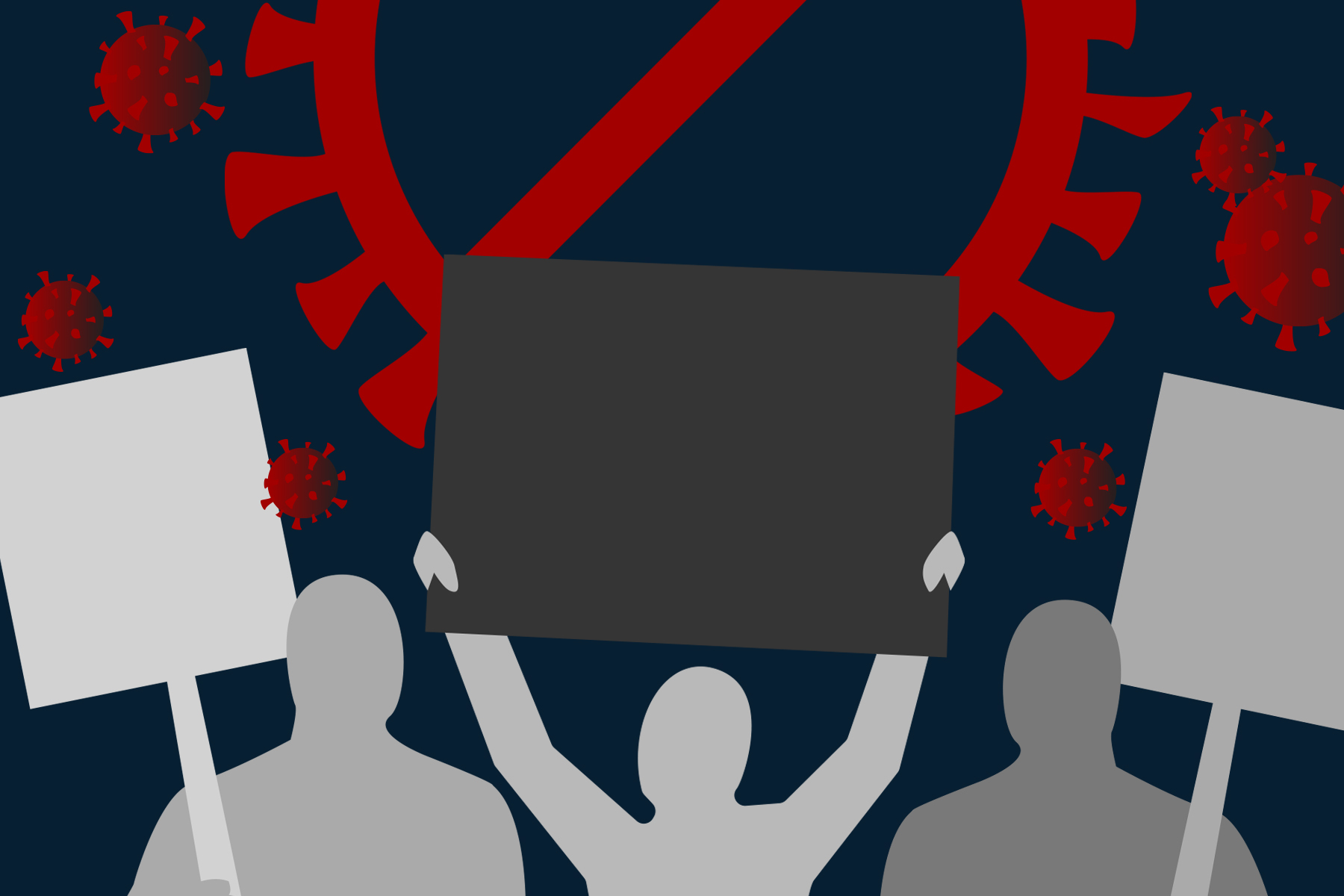As we approach the one year anniversary of the World Health Organization’s COVID-19 pandemic declaration, many people around the world are reflecting on the events that have transpired in the last 365 days. The “new normal” shaped by COVID-19 restrictions is likely at the front of most people’s minds, and the struggles the pandemic caused for the global population has dramatically reshaped our future.
Alongside the virus, the past year has also featured something else in nearly every nation on Earth: mass protests. According to Carnegie, all but two months of the last year have featured nearly twice as many new global protests compared to 2019.
The causes behind these protests were as varied as the success countries had in containing the virus. Police brutality, anti-corruption and anti-lockdown protests were among the most globally widespread. Controversial legislation, such as abortion restrictions in Poland and agriculture reform in India, also made up a large portion of these demonstrations. As recently as January, the presidential election in the United States resulted in protestors storming the Capitol.
Record numbers of mass protests occurring during one of the most widespread disasters in modern history is not a coincidence. The question is: What is the relationship between the pandemic and the protests?
Protesting the Pandemic
Arguably, the most widespread cause throughout the world during the pandemic is protests against government-mandated lockdowns and restrictions. As of October 2020, widespread anti-lockdown protests had taken place in as many as 26 countries and included nearly every form of government and geographic region imaginable.
According to World Politics Review, many of these protests can be divided into “pro-citizen” and “pro-livelihood” causes.
The pro-citizen demonstrations focused on the perception that COVID-19 restrictions were imposing on citizens’ rights. These protests were often nationalist in nature, and they attracted a wide range of participants, from libertarian-aligned citizens to far-right organizations sporting the Nazi flag. They often sported the most blatant misinformation of any protests, bringing fringe conspiracies such as anti-vaccination into the spotlight.
The pro-livelihood protests focused more on the business closings that affected citizens’ incomes. These protests were most widespread in developing nations, since many of their economies depend on the revenue from service and hospitality jobs. However, large protests occurred in wealthier, less hospitality-dependent nations as well.
These protests are symbiotic to both the misinformation that has become characteristic of the pandemic, as well as the financial ruin the virus and its associated lockdowns have inflicted on much of the world’s population. In many ways, these protests are going against the pandemic itself. Anti-lockdown causes are the simplest form of the relationship between protests and the coronavirus, as the issues being protested against wouldn’t exist without the virus in the first place.
Protesting the Pre-Existing Conditions of the Pandemic
When Americans think of protests in 2020, they will most likely think of the protests against police brutality following the killing of George Floyd. These protests weren’t the result of a cause born out of the pandemic, but instead, an issue that finally reached its boiling point alongside it.
While the virus may not have been the cause, it was definitely a massive part as to why the turnout was so significant compared to previous, related protests, such as those in 2014 surrounding the death of Trayvon Martin.
Journalist Jesse Washington claimed that the pandemic provided an environment for white people in particular to finally take notice of an issue that rarely affected them day-to-day.
“The alarm echoed more loudly during the coronavirus lockdown. [Mary Frances] Berry noted that Floyd’s killing landed in a space with no sports, school, family activities, vacations or other recreational pursuits that normally divert our attention,” Washington wrote in an article for The Undefeated.
Additionally, the financial stress put on the American people by the COVID-19 restrictions may have contributed to more people being willing to protest. Wellesley College assistant professor of political science, Maneesha Arora, reported numerous findings from a survey he performed on Americans in 2020, chief of which being that financial instability helped draw more people out in support.
“For many, particularly those who had never before turned out for a BLM protest, what pushed them into the streets was being hurt by pandemic public health measures,” Arora said in an article for the Washington Post.
This phenomenon surrounding pandemic-supported turnout is not isolated to the Black Lives Matter protests, either. The #EndSARS movement in Nigeria, a protest against intense police brutality that had been ongoing for decades, may have been fueled partly by young Nigerians’ anger and frustration against the government that has only been exacerbated by the pandemic.
From Black Lives Matter to #EndSARS, there were many protests in the last year that have not been caused or directly influenced by the pandemic, but instead have garnered support through the unique circumstances of it. The relationship between the virus and these protests could be said to be commensalistic, as the protests were influenced by the COVID-19 restrictions but were not targeting the virus itself.
The Weaponization of the Pandemic
While some may feel restrictions in their countries were too intense, there is undeniable evidence that some governments have used the pandemic as a weapon to suppress dissent within their borders.
The governments being accused of such offenses are from every corner of the globe. In central Europe, Serbian President Aleksandar Vucic used the COVID-19 restrictions amid a general election to sway the odds in his favor, as the orders often inhibited citizens’ ability to get to the polls.
In China, the government heavily restricted the movement of residents from the state of Xinjiang, the home of 11 million Uighur Muslims, even as the rest of the country was reopened. The crackdown in this region was harsher than any other place in China, and citizens and experts alike agree that the government is using the pandemic restrictions as a way to suppress the Uighurs, who have been subject to intense government oppression in recent years.
Most recently, Myanmar’s military used the virus as a weapon to suppress dissent against the recent coup. The coup itself was justified through the use of “concern for public safety,” and the protests that followed were broken up by citing that protestors were violating the government’s extreme COVID-19 restrictions, which often carry jail time.
The weaponization of public health restrictions is directly tied to how the pandemic has affected this year of civil disobedience. Many of these issues were not caused by the virus, but have been addressed by governments using a new set of rules the crisis grants them. In many ways, it is an inverse of how the virus affected causes such as Black Lives Matter and #EndSARS.
Shaping Our Future
Coronavirus is undoubtedly the single biggest subject that will shape our world in the coming years. 2.46 million people have died — all of whom were parents, siblings, friends and loved ones. The economic ruin the virus has inflicted is going to affect the global economy for decades to come. The COVID-19 pandemic may very well end up being the most impactful event this century.
Additionally, the protests occurring around the world on massive scales are also shaping the coming years. Whether it’s protesting the pandemic itself, a cause unrelated or using restrictions as a weapon against protests, the virus and its outcomes are molding the protests occurring within it — and as such, are changing how they affect the world for the foreseeable future.

















